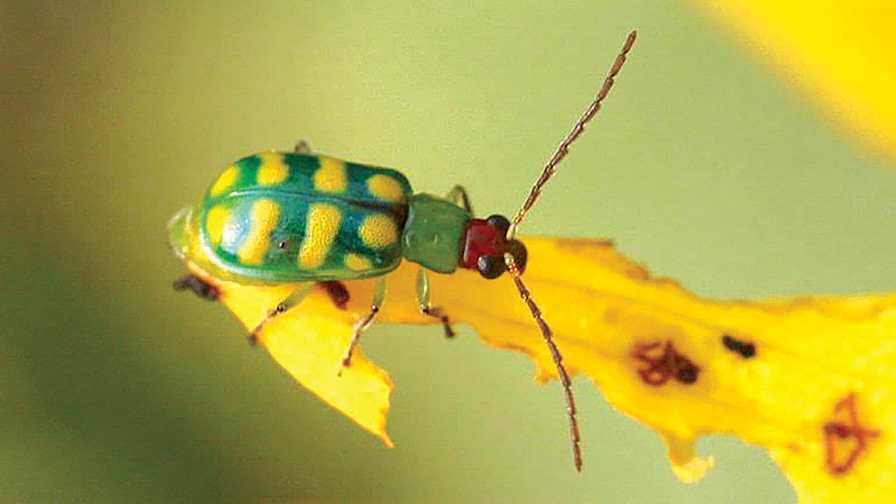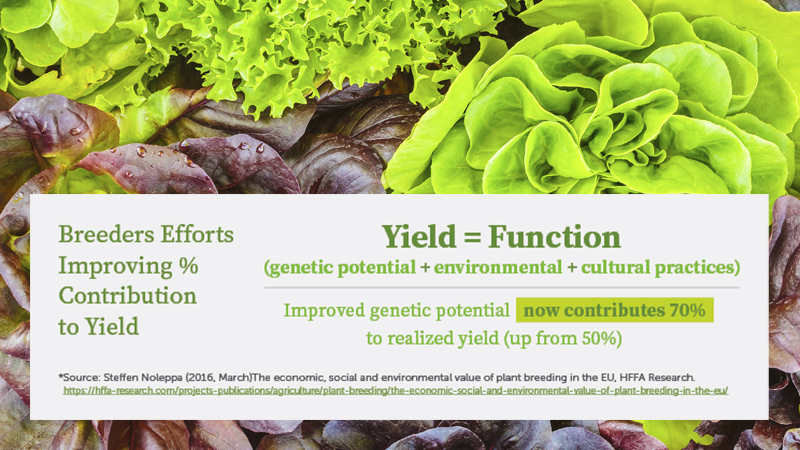Gameplan to Beat the Banded Cucumber Beetle

The banded cucumber beetle (Diabrotica balteata) is a tropical insect, whose distribution has expanded over the last century throughout the southern U.S. with its northward distribution restricted by freezing temperatures. Photo by Russ Ottens
In Florida, three main species of cucumber beetles occur. The spotted cucumber beetle is more common in North Florida, while the banded cucumber beetle is more commonly found in South Florida. It is most abundant in the organic soils near Lake Okeechobee, where it is known as a vegetable pest.
Adults are greenish yellow in color with a red head and black thorax. Usually there are three transverse bands and a thin green band running down the center of the insect’s back, but the banding pattern is variable, and sometimes almost absent. Adults are good fliers and can invade and damage fields quickly.
The banded cucumber beetle is omnivorous, attacking numerous plant species and plant parts. While the pest prefers feeding on weeds in the genus Amaranthus, it attacks a wide range of vegetables, including cucumber, squash, bean, pea, sweet potato, okra, corn, lettuce, onion, and various crucifers.
Damage may occur to foliage, blossoms, crown, and roots. Delayed growth, plant stunting, and stand loss can result from heavy feeding damage by adults.
Some of the most serious injury results from larval feeding on the roots of sweet potato and other vegetables.
In addition to feeding damage, the banded cucumber beetle is known as a vector of several pathogens including Stewart’s wilt in corn and several viral diseases in beans. Larval feeding also might increase the incidence and severity of Fusarium wilt in cucurbits.
Survival and Spread
The banded cucumber beetle remains active as long as the weather remains favorable, with up to six to seven generations per year. Under optimal conditions, a life cycle can be completed in 45 days.
Females deposit two to 15 clusters of oval-shaped, pale yellow eggs in the soil.
The white, elongate, soft-bodied larvae have three pairs of minute legs and complete their development below ground feeding on roots.
Management Methods
Spiders and other predacious insects prey on these insects, but migration of large numbers can quickly overwhelm the natural enemies. Since many weed species host this insect, effective weed control can be valuable in reducing damage to seedlings.
Steinernema nematodes parasitize banded cucumber beetle and have been shown to be effective under experimental conditions.
Foliar insecticides are sometimes needed to prevent damage to seedlings, but adults are rarely abundant enough to warrant control on large plants. Chemical control of adults is through contact or bait insecticides. Baits may be attractive as they selectively treat the beetles as they eat the bait.
Insecticides are used to prevent damage to roots by larvae. Typically, granular insecticides are applied over the row, either at or just after planting. Numerous pesticides are labeled for treatment of cucumber beetle larvae.
Consult UF/IFAS recommendations for currently labeled insecticides for cucumber beetle control in Florida vegetables.










